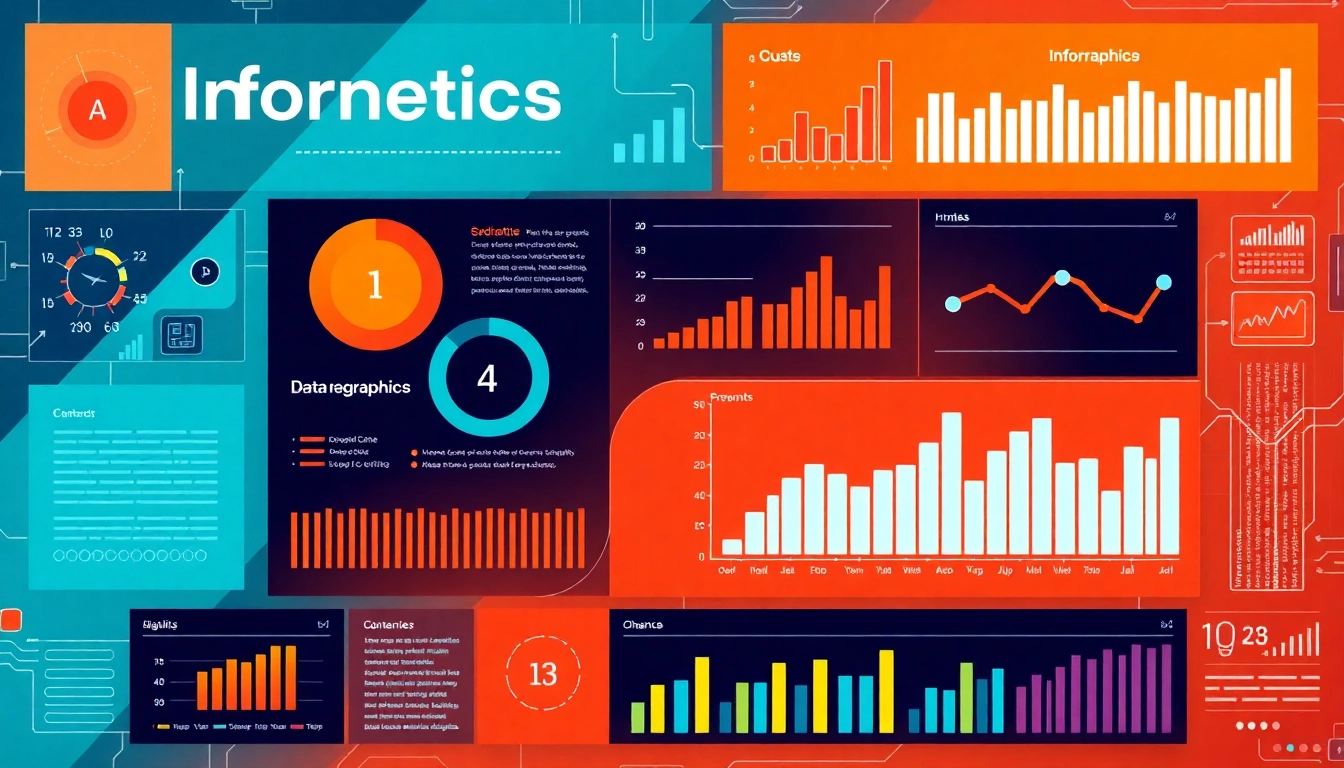Understanding AI Blockchain Analytics
What is AI Blockchain Analytics?
AI Blockchain Analytics refers to the use of artificial intelligence techniques to analyze data within blockchain networks. This innovative approach combines the transparent, immutable nature of blockchain technology with sophisticated analytical tools powered by AI, leading to new possibilities in data interpretation and decision-making. By employing algorithms that can sift through massive volumes of transaction data, businesses and institutions can gain insights that were previously unavailable or too complex to derive manually. Not only does this enhance the understanding of blockchain functionalities, but it also optimizes performance and identifies anomalies that could indicate fraud or inefficiencies.
Through AI blockchain analytics, organizations can automate decision-making, forecast trends, and implement proactive measures in various industries, including finance, supply chain management, and healthcare.
Importance of Analytics in Blockchain
The adoption of blockchain technology has surged across various sectors due to its inherent benefits, such as decentralization, security, and transparency. However, the sheer volume of data generated on blockchain networks can be overwhelming. Herein lies the significance of analytics; it helps to make sense of this vast data landscape. The ability to analyze blockchain data not only uncovers hidden insights but also allows for improved regulatory compliance, risk management, and performance optimization. Essentially, by applying analytics, organizations can transform data into actionable intelligence.
Key Components of AI Blockchain Analytics
There are several key components that define AI blockchain analytics:
- Data Collection: Efficient data aggregation methods from various blockchain nodes to ensure a comprehensive dataset.
- Machine Learning Algorithms: Techniques that enable the system to learn from data patterns and improve over time.
- Data Visualization Tools: Tools that facilitate the interpretation of data through visual formats, aiding in swift decision-making.
- Real-time Analytics: The capability to analyze data as it is generated, which is crucial for timely decision-making.
- Predictive Analytics: Techniques that forecast future trends based on historical data, enabling organizations to plan accordingly.
Common Challenges in AI Blockchain Analytics
Data Integrity Issues
One of the primary challenges in AI blockchain analytics is ensuring the integrity of the data. While blockchain is designed to offer a secure and immutable record of transactions, the data being inputted can sometimes be inaccurate or misleading. This can lead to faulty analytics and misguided decisions. Therefore, it is vital for organizations to implement robust data validation processes to enhance the reliability of their analytics outputs.
Scalability Challenges
Another significant challenge is scalability. Blockchain networks can become congested with increased transaction loads, affecting the speed and performance of analytics capabilities. Leveraging AI can be beneficial, as machine learning algorithms can help optimize transaction processing; however, it requires sophisticated infrastructure and resources to manage effectively. Organizations need to plan for scalability from the outset, investing in advanced tools capable of handling significant data volumes without compromising performance.
Regulatory Compliance Considerations
As blockchain technology continues to evolve, so do the regulatory landscapes surrounding it. Compliance with local and global regulations can be daunting, especially when dealing with sensitive data. Organizations utilizing AI blockchain analytics must ensure that their systems comply with all applicable laws to avoid severe penalties and reputational damage. Ongoing education about regulatory changes and investments in compliance technologies can help organizations stay ahead of these challenges.
Implementing Effective AI Solutions
Selecting the Right Tools for Analytics
For organizations looking to implement AI blockchain analytics, the selection of appropriate tools is crucial. Factors to consider include the capability of the tools to handle large datasets, the flexibility to integrate with existing systems, and user-friendliness. Organizations should conduct thorough research and possibly pilot various analytics tools to ascertain which fits best with their operational needs and technological infrastructure.
Integrating AI with Existing Blockchain Systems
Integrating AI solutions with existing blockchain systems can present both opportunities and challenges. Successful integration requires a deep understanding of both the blockchain technology in use and the AI tools being implemented. Organizations may find it beneficial to work with consultants or experts who specialize in both fields to ensure a seamless integration process. Additionally, stakeholders must be involved throughout the integration process to promote smooth transitions and encourage acceptance of new technologies.
Best Practices for Data Management
Effective data management is essential in the realm of AI blockchain analytics. Organizations should establish clear protocols for data collection, storage, visualization, and interpretation. Some best practices include:
- Consistent Data Format: Standardizing data formats can improve the efficiency of analyses and cooperation between systems.
- Regular Audits: Conducting regular data audits can help identify and rectify inconsistencies early on.
- Access Control: Ensuring that only authorized personnel have access to sensitive data can mitigate risks associated with data breaches.
- Documentation: Keeping comprehensive records of data sources, methodologies, and processes helps maintain transparency and assist in future reviews.
Case Studies: Successful Implementations
Industry Leaders Utilizing AI Blockchain Analytics
Many industry leaders have successfully embraced AI blockchain analytics to enhance their operational efficiencies and drive innovation. Notable examples include:
- Financial Institutions: Banks and financial service providers have leveraged AI analytics to detect fraudulent transactions in real-time, thereby enhancing security and trust in the platform.
- Supply Chain Enterprises: Companies like IBM have harnessed blockchain’s traceability features combined with AI to improve supply chain transparency and efficiency, allowing for better inventory management.
- Healthcare Providers: By implementing AI blockchain analytics, healthcare organizations can efficiently manage patient data while ensuring privacy and compliance with regulations like HIPAA.
Lessons Learned from Real-World Applications
Real-world implementations of AI blockchain analytics have offered critical insights. For instance, many organizations have learned the importance of ensuring robust data governance and security measures from the outset. Additionally, early adopters have shown that involving stakeholders in the design and integration processes can significantly enhance buy-in and successful adoption across teams.
Measurable Outcomes and Results
The outcomes of AI blockchain analytics implementations are often quantifiable and appreciable. Companies have reported reductions in operational costs due to improved efficiencies and fewer fraud-related losses. Moreover, many organizations found that the improved insights gained from analytics led to better-informed decision-making, translating into higher revenue growth and customer satisfaction. Tracking these metrics consistently can help organizations continually refine their strategies and capitalize on their investments.
Future Trends in AI Blockchain Analytics
Evolving Technologies and their Impact
The landscape of AI blockchain analytics is rapidly evolving with advancements in technology. Innovations in machine learning, deep learning, and predictive analytics are enhancing the depth of insights that can be gleaned from blockchain data. Future solutions may leverage advanced algorithms that not only automate data analysis but also provide predictive capabilities that can foresee market movements and operational challenges before they arise, helping organizations strategize effectively.
Forecasting Market Developments
As AI and blockchain technologies continue to mature, market developments will likely reflect a stronger convergence of these technologies. We may see an increase in partnerships between AI companies and blockchain platforms, leading to the emergence of integrated solutions designed to meet specific industry needs. Furthermore, as regulations around blockchain technology evolve, we expect a rise in compliance-focused analytics solutions that can help organizations navigate these changes smoothly.
Preparing for Regulatory Changes
Organizations must remain vigilant regarding regulatory changes, especially as governments and regulatory bodies worldwide begin to clarify their stances on blockchain technology. Preparing for these changes involves not just adopting compliant technologies but also fostering a culture of compliance within the organization. This entails regular training, updates about regulatory developments, and possibly working alongside legal experts to ensure adherence to new laws as they emerge.


